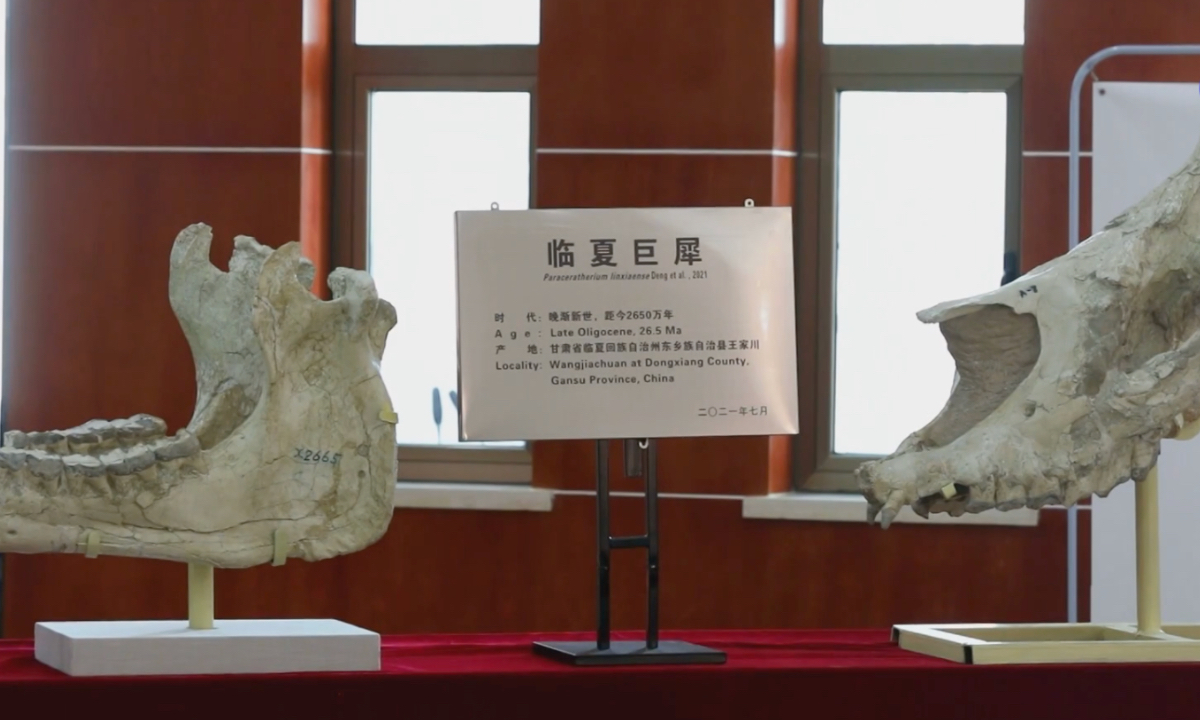
A 26.5 million-year-old giant rhino fossil has been unearthed in northwest China's Gansu. Photo: Xinhua
Linxia Basin in Gansu was a gathering place for the giant rhinoceros, the world's largest terrestrial mammal, said Deng Tao, director of the institute, as he revealed one of the findings.
The basin has also yielded fossils of the earliest savanna fauna, the unique Hezheng sheep, and the largest horse - called equus eisenmannae - according to Deng.
The oldest preserved protein was found in a fossilized ostrich egg dating back to 6.5 million years ago in Linxia. It's earlier than the protein extracted from a fossilized ostrich egg dating back 3.8 million years that was unearthed in Tanzania, Africa.
Linxia Basin lies in the northeastern edge of the Qinghai-Xizang Plateau, with sedimentary strata dating back 30 million years. The vertebrate fossils found in this area include reptiles, birds and mammals, covering over 250 types of animals.
"There is no end in scientific research. There is a large amount of unexplored ancient animal fossils in this area and we look forward to new findings," said Deng.


